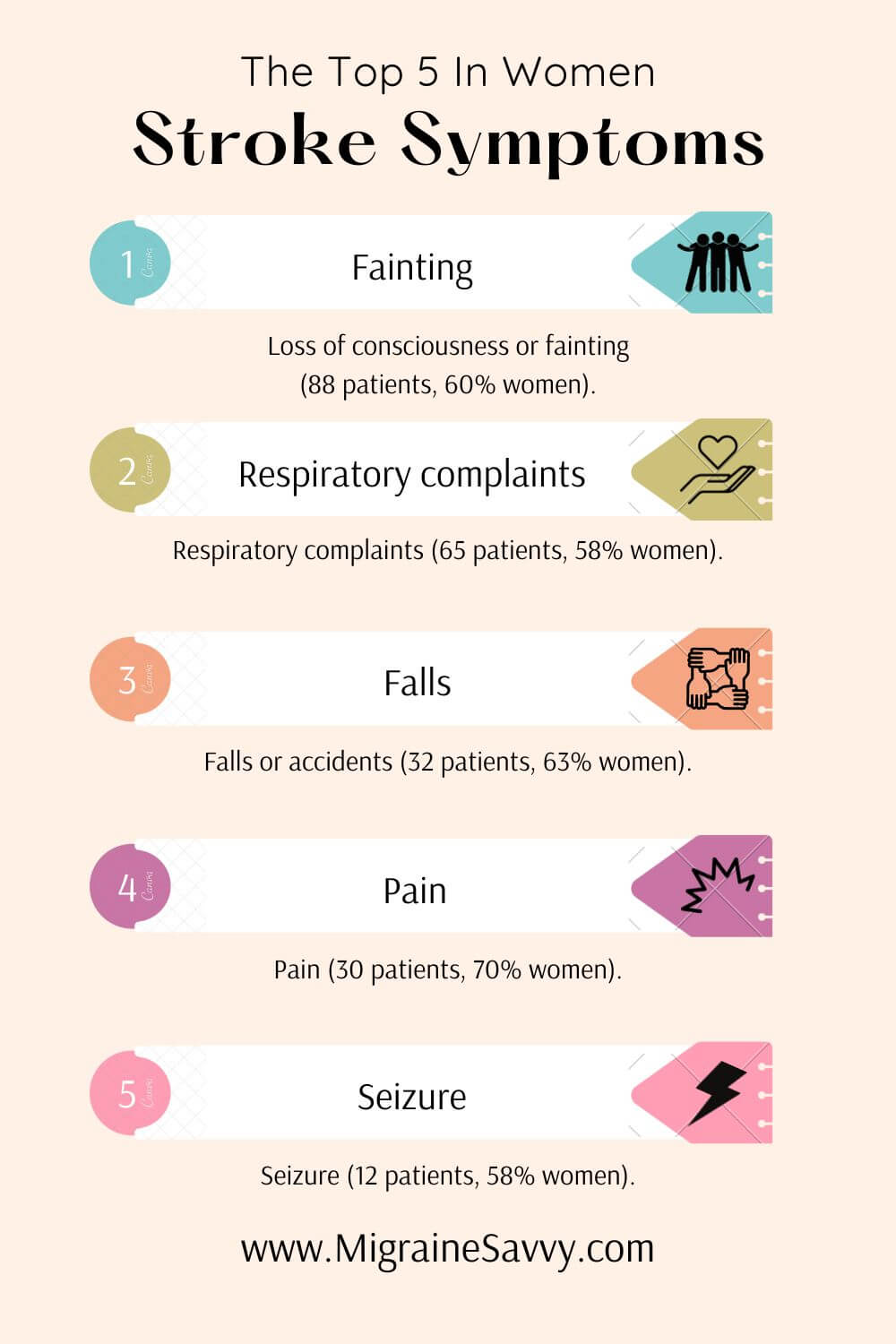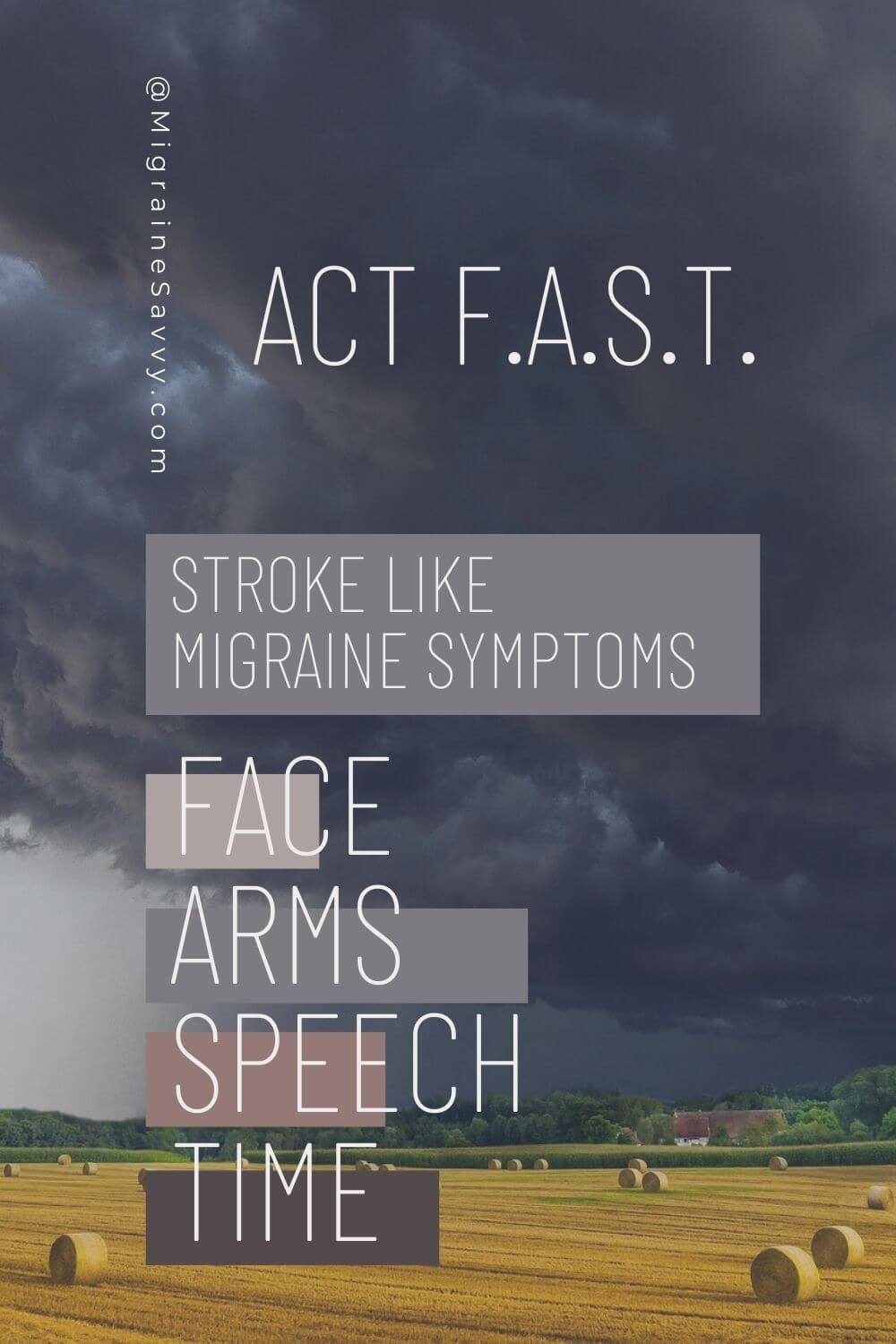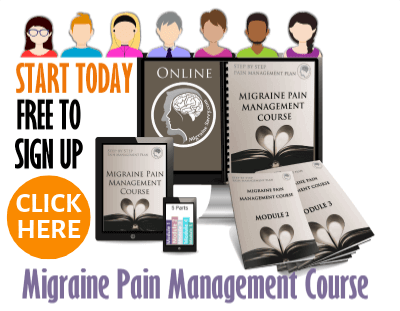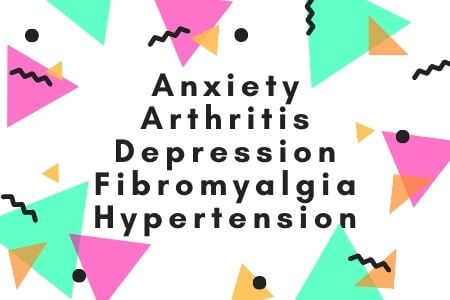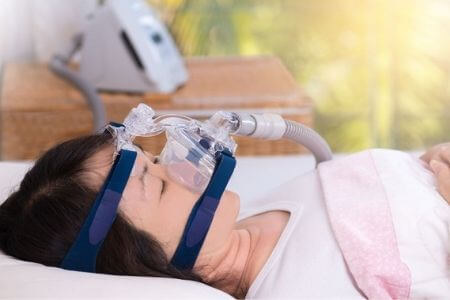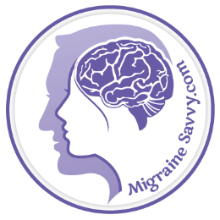- Home
- Associated Conditions
- Migraine Stroke Symptoms
GET THE BEST MAGNESIUM
My #1 Choice - Magnesium Breakthrough - combines 7 types of magnesium in a humic/fulvic monoatomic blend to optimize absorption. I personally use it to combat attacks – nothing else compares.
Migraine Stroke Symptoms: What to Watch For
A Migraine Can Mimic Stroke Like Symptoms
Can a migraine mimic a stroke? Yes, it can.
And migraine has stroke like symptoms that can be quite different for men and women. Read the top 6 most common symptoms below and find out what differences to watch for now.
Strokes and transient ischemic attacks (TIA) often have very similar symptoms to migraines with aura. These being: visual disturbances, speech impairment, and muscle weakness.
These similarities make it very hard to differentiate typical stroke symptoms from just plain migraine symptoms. And knowing the difference could save your life!
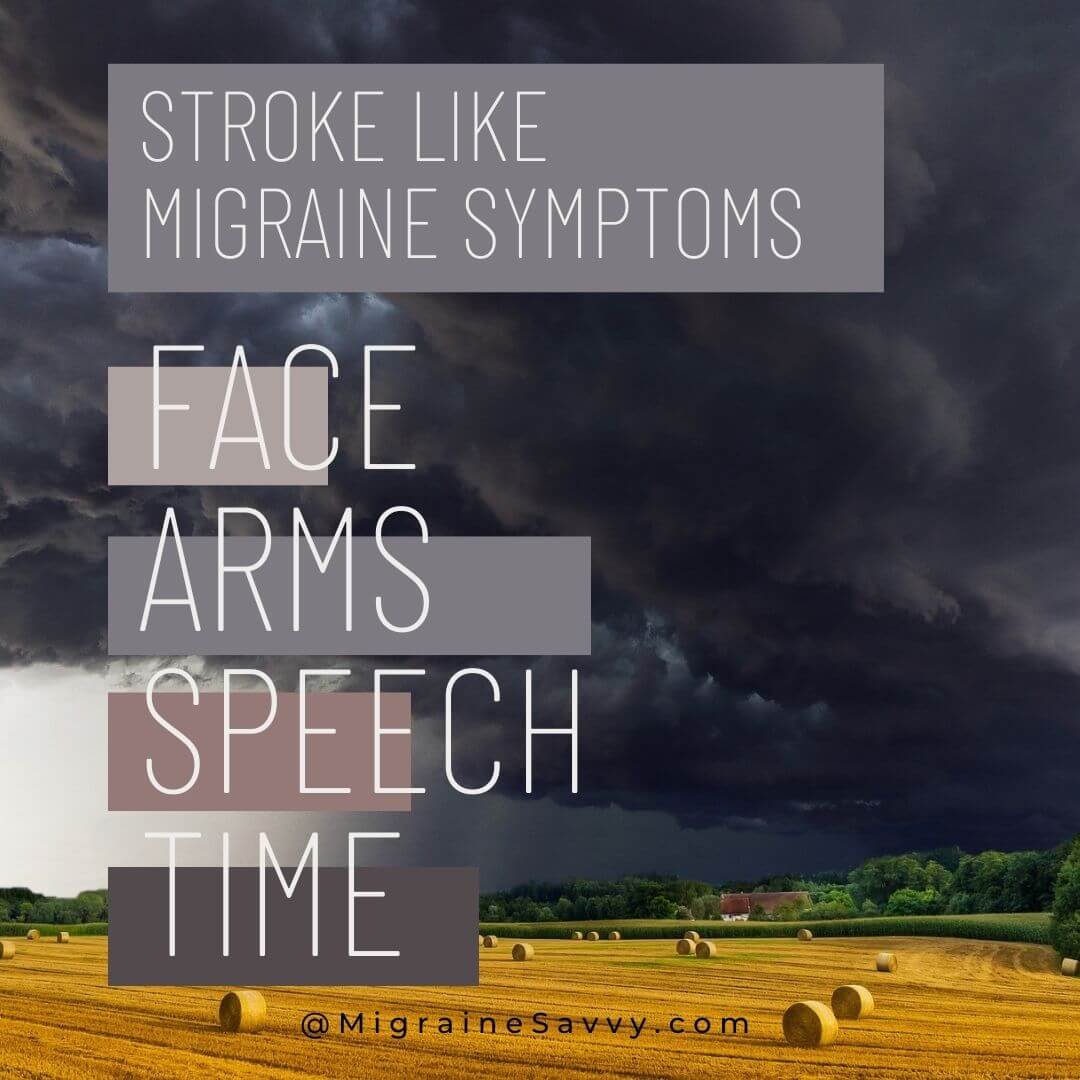 Learn how to act F.A.S.T @migrainesavvy
Learn how to act F.A.S.T @migrainesavvy
Eventually you will become aware of your own common patterns and body signals for your migraine attacks. But I urge you to pay attention right from the start, if this is all new to you.
For example, my warning signals an attack is on its way mostly starts in with pain behind my eyes or neck. It is not sudden; it is slow and grows into painful! Migraine stroke symptoms are typically very sudden.
"A stroke is a sudden disruption in blood flow to the brain caused by a blockage or bleeding of a blood vessel. Areas of the brain that are affected by the blockage or bleeding can become damaged within minutes." [1]
"The effects of a stroke may be mild or severe and temporary or permanent, depending on which brain cells are damaged, how much of the brain is involved, and how quickly the blood supply is restored to the area." [1]
Symptoms of a stroke usually happen quickly, but they may also occur over a few hours. It depends on where and how bad the hemorrhage is. Sometimes you might experience just a mild weakness or tingling, a mild dizziness at first. You may even have more gradual declines in walking and balance.
If this is happening, please see your physician immediately. These small differences may be attributed to the aging process, yet another migraine, or something more serious. You see how hard all of this is. Here are the most common strokes symptoms to be aware of.
The Most Common Stroke Symptoms
Here are the 6 most common stroke symptoms to watch out for:
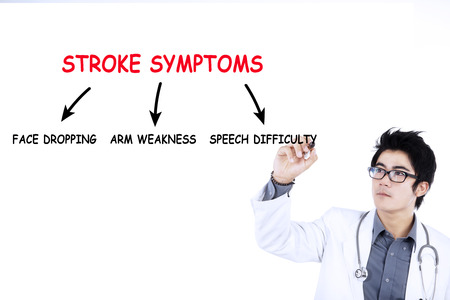 F.A.S.T. = Face, Arm, Speech, Time
F.A.S.T. = Face, Arm, Speech, Time• Sudden numbness, weakness, or tingling on only one side of your body. It could also present as a loss of movement in your face, arm, or leg, on one side of your body.
• Sudden changes in your vision.
• Sudden difficulty speaking and forming words.
• Sudden unexpected confusion or trouble understanding simple statements.
• Sudden dizziness or problems walking.
• A sudden, severe headache that is different from any of your past headaches or migraines.
It all sounds like migraine to me! You might experience different symptoms at different times. So, if you can, watch for a common pattern that you can be aware of.
And learn your early warning signals so you know when to take action to get your best chance at aborting your attack.
My #1 Choice in Magnesium Supplements
Migraine Stroke Symptoms in Women Differ to Those in Men
Migraine stroke symptoms can vary, especially between women and men.
Women are more likely to have atypical stroke symptoms like the ones
listed below.
According to Crystal Phend, the Staff writer for MedPage today, stroke symptoms in women are often atypical and this causes problems in diagnosing stroke in the emergency department. [2]
Now this article is from
2007, so I hope they (emergency departments and doctors) have sorted it out by now.
The 5 Top Stroke Symptoms in Women Are
- Loss of consciousness or fainting (88 patients, 60% women),
- Respiratory complaints (65 patients, 58% women),
- Falls or accidents (32 patients, 63% women),
- Pain (30 patients, 70% women), and
- Seizure (12 patients, 58% women).
The typical warning signs of sudden severe headache, with no obvious cause; sudden numbness or weakness of the face, arm or leg; and sudden confusion or having trouble speaking was reported to be equal between men and women. But having vision changes, dizziness or trouble walking was occurring significantly less in women.
Now this may all sound a little confusing, but I feel it is really important to know that migraine stroke symptoms look different in women than in men, as a higher number of women suffer from migraines.
The National Stroke Association Warning Signs of Stroke
This short video from the National Stroke Association will help you to identify the warning signs of stroke. And here is their F.A.S.T acronym to help you remember them:
F - FACE: Ask the person to smile. Does one side of their face droop down?
A - ARMS: Ask the person to raise both arms above their head. Does one of their arms drift downward?
S - SPEECH: Ask the person to repeat a simple phrase. Does their speech sound slurred or strange?
T - TIME: If you observe any of these signs, call your local emergency number immediately.
In the USA it's 911, in Australia 000, in Europe 112, but it varies.
Try this website: emergency phone numbers.
4 More Points to Help You Tell Them Apart
Migraine with Aura (MWA)
- Migraine with aura will move down the body. It will start at one side of your face, you'll have a visual disturbance, your tongue will most likely be effected... then your arm and then down to your leg. [4]
- It should last about 20 minutes and then disappear. [4]
Stroke
- SUDDEN
- Stroke typically causes numbness on a whole side of the body. Complete and at the same time. [4]
"The real key is in the history." ~ Dr. Allan Purdy [4]
Make sure you know your migraine history and note if it’s the same or not.
*** Stick out your tongue! ***
Stick out your tongue (or get them to stick out their tongue). If it goes off to one side... this could be a serious warning sign.
More Help to Reduce Your Risk of Stroke Right Now
My article on reducing migraine stroke risks right now has some tips to help prevent strokes. Take a minute to read this post... it could save your life.
I also have a whole bookstore - 3 courses - and some fun free challenges to help you manage pain, reduce stress and prevent attacks.
P.S. Making healthy lifestyle choices is really important.
If you like this article, please share it.

WANT MORE TIPS? Subscribe to my newsletter and follow along on Facebook and Pinterest for all of the latest updates.
ASSOCIATED CONDITIONS Related Articles
How to be more migraine savvy right now...
Migraine Stroke Symptoms References:
1. WebMD, (2015) Stroke Symptoms. Available [online] at: https://www.webmd.com/stroke/tc/stroke-symptoms.
2. Phend, C. staff writer for MedPage Today (2007) Atypical Stroke Symptoms in Women. Available [online] at: https://www.medpagetoday.com/MeetingCoverage/ISC/5022
3. National Stroke Association Warning Signs of Stroke. (2018) Available [online] at: https://www.stroke.org/understand-stroke/recognizing-stroke Updated Apr. 13, 2022
4. Purdy, Dr. A (2018) Migraine World Summit. Available [online] at: https://www.migrainesavvy.com/summit

